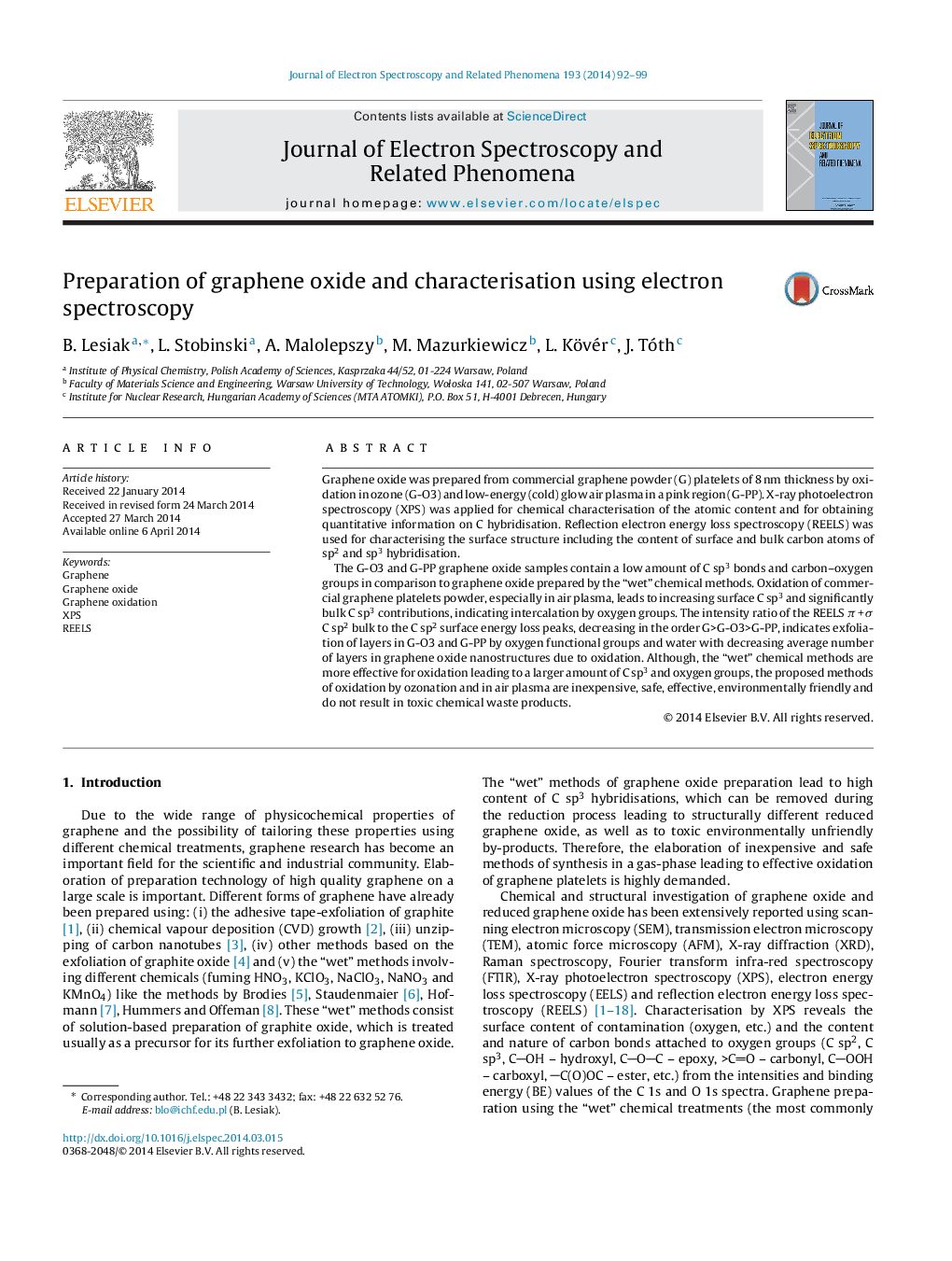| Article ID | Journal | Published Year | Pages | File Type |
|---|---|---|---|---|
| 5395865 | Journal of Electron Spectroscopy and Related Phenomena | 2014 | 8 Pages |
Abstract
The G-O3 and G-PP graphene oxide samples contain a low amount of C sp3 bonds and carbon-oxygen groups in comparison to graphene oxide prepared by the “wet” chemical methods. Oxidation of commercial graphene platelets powder, especially in air plasma, leads to increasing surface C sp3 and significantly bulk C sp3 contributions, indicating intercalation by oxygen groups. The intensity ratio of the REELS ÏÂ +Â Ï C sp2 bulk to the C sp2 surface energy loss peaks, decreasing in the order G>G-O3>G-PP, indicates exfoliation of layers in G-O3 and G-PP by oxygen functional groups and water with decreasing average number of layers in graphene oxide nanostructures due to oxidation. Although, the “wet” chemical methods are more effective for oxidation leading to a larger amount of C sp3 and oxygen groups, the proposed methods of oxidation by ozonation and in air plasma are inexpensive, safe, effective, environmentally friendly and do not result in toxic chemical waste products.
Related Topics
Physical Sciences and Engineering
Chemistry
Physical and Theoretical Chemistry
Authors
B. Lesiak, L. Stobinski, A. Malolepszy, M. Mazurkiewicz, L. Kövér, J. Tóth,
